
SOUTHERN UTAH – As a brand new year has arrived, make a resolution to get outside and check out some of the phenomenal celestial events on display in the 2016 night sky.
Take advantage of this compiled astronomy calendar featuring the year in space and dates for the most notable celestial events happening in 2016, including moon phases, meteor showers, eclipses, oppositions, conjunctions and other interesting events.
Whether you’re an experienced astronomer or observing the night sky for the first time, you’ll want to check out these events dazzling and igniting the night sky.
Nearly all of these events can be seen with the naked eye, although some may be better enjoyed with a telescope or good pair of binoculars.
Be sure to keep an extra-close eye out for the best annual meteor showers: the Quadrantids in early January, the Perseids in mid-August and the Geminids in mid-December.
January
- Jan. 3-4 – Quadrantids meteor shower: The first meteor shower of the year, the Quadrantids, will be visible from Jan. 1-5 and is expected to peak on the night of Jan. 3 and the morning of Jan. 4. With up to 40 shooting stars per hour at its peak, the Quadrantids is considered an “above average shower” thought to be produced by dust grains left behind by an extinct comet known as 2003 EH1, which was discovered in 2003.
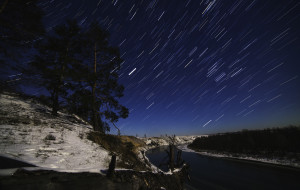 Unfortunately, the second-quarter moon will wash out all but the brightest meteors this year. The best viewing will be from a dark location after midnight. Meteors will appear to radiate from the northeast sky, just off the handle of the Big Dipper, but can be visible anywhere in the sky.
Unfortunately, the second-quarter moon will wash out all but the brightest meteors this year. The best viewing will be from a dark location after midnight. Meteors will appear to radiate from the northeast sky, just off the handle of the Big Dipper, but can be visible anywhere in the sky. - Jan. 10 – New moon: The moon will be directly between the Earth and the sun and will not be visible from Earth, making it the best time of the month to observe faint objects such as galaxies and star clusters because there is no moonlight to interfere.
- Jan. 24 – Full moon: The moon will be directly opposite the Earth from the sun and will be fully illuminated as seen from Earth. This full moon was known by early Native American tribes as the “Full Wolf Moon,” according to seasky.org, because this was the time of year when hungry wolf packs howled outside their camps. This moon has also been known as the “Old Moon” and the “Moon After Yule.”
February
- Feb. 7 – Mercury at greatest western elongation: The planet Mercury reaches greatest western elongation of 25.6 degrees from the sun. This is the best time to view Mercury since it will be at its highest point above the horizon in the morning sky.
From Washington County, it may be difficult to observe as it will appear no higher than 9 degrees above the horizon, according to in-the-sky.org. It will be visible in the dawn sky. Mercury will rise at 5:55 a.m. MST, 1 hour and 17 minutes before the Sun, and attain an altitude of 9 degrees above the south-eastern horizon before fading from view as dawn breaks at around 6:54 a.m., so look for the planet low in the eastern sky just before sunrise. - Feb. 8 – New moon: This is the best time of the month to observe faint objects such as galaxies and star clusters because there is no moonlight to interfere.
- Feb. 22 – Full moon: This full moon was known by early Native American tribes as the “Full Snow Moon,” according to seasky.org, because the heaviest snows usually fell during this time of the year. This moon has also been known by some tribes as the “Full Hunger Moon” since hunting can be difficult during this time of year.
March
- March 8 – Jupiter at opposition: This is the best time to view and photograph Jupiter and its moons, as the giant planet will be at its closest approach to Earth and its face will be fully illuminated by the sun. It will be brighter than any other time of the year and will be visible all night long.
 From Washington County, it will be visible between 7:04 p.m. and 6:24 a.m., according to in-the-sky.org. At 7:04 p.m., Jupiter rises 7 degrees above the eastern horizon, and then reach its highest point in the sky at 12:46 a.m., 58 degrees above the southern horizon.
From Washington County, it will be visible between 7:04 p.m. and 6:24 a.m., according to in-the-sky.org. At 7:04 p.m., Jupiter rises 7 degrees above the eastern horizon, and then reach its highest point in the sky at 12:46 a.m., 58 degrees above the southern horizon.
A medium-sized telescope should be able to show you some of the details in Jupiter’s cloud bands, and a good pair of binoculars should allow you to see Jupiter’s four largest moons: Io, Europa, Ganymede, and Callisto, appearing as bright dots on either side of the planet. - March 9 – New moon: This is the best time of the month to observe faint objects such as galaxies and star clusters because there is no moonlight to interfere.
- March 9 – Total solar eclipse: A total solar eclipse occurs when the moon completely blocks the sun, revealing the sun’s outer atmosphere known as the corona. The path of totality will only be visible in parts of central Indonesia and the Pacific Ocean, according to seasky.org. A partial eclipse will be visible in most parts of northern Australia and southeast Asia. From Washington County, the eclipse will not be visible, however.
- March 20 – March equinox: The sun will shine directly on the equator and there will be nearly equal amounts of day and night throughout the world. This day also marks the beginning of spring, or vernal equinox, in the Northern Hemisphere and the first day of fall, or autumnal equinox, in the Southern Hemisphere.
- March 23 – Full moon: This full moon was known by early Native American tribes as the “Full Worm Moon” because this was the time of year when the ground would begin to soften and the earthworms would reappear, according to seasky.org. This moon has also been known as the “Full Crow Moon,” the “Full Crust Moon,” the “Full Sap Moon” and the “Lenten Moon.”
- March 23 – Penumbral lunar eclipse: A penumbral lunar eclipse occurs when the moon passes through the Earth’s partial shadow, or penumbra. During this type of eclipse the moon will darken slightly but not completely. Unlike other kinds of eclipses, penumbral eclipses are extremely subtle events to observe.
The penumbral eclipse will be visible from Washington County in the western sky. The Moon will lie 22 degrees above the horizon at the moment of greatest eclipse. The eclipse will last from 3:40 a.m. until 7:55 a.m., according to in-the-sky.org, and maximum eclipse will occur at 5:48 a.m.
April
- April 7 – New moon: This is the best time of the month to observe faint objects such as galaxies and star clusters because there is no moonlight to interfere.
- April 18 – Mercury at greatest eastern elongation: The planet Mercury reaches greatest eastern elongation of 19.9 degrees from the sun. This is the best time to view Mercury since it will be at its highest point above the horizon in the evening sky. Look for the planet low in the western sky just after sunset.
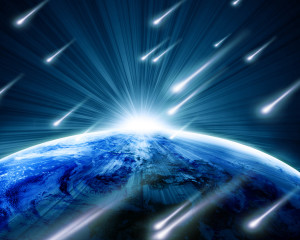 April 22 – Full moon: This full moon was known by early Native American tribes as the “Full Pink Moon” because it marked the appearance of the moss pink, or wild ground phlox, which is one of the first spring flowers, according to seasky.org. This moon has also been known as the “Sprouting Grass Moon” and the “Growing Moon.”
April 22 – Full moon: This full moon was known by early Native American tribes as the “Full Pink Moon” because it marked the appearance of the moss pink, or wild ground phlox, which is one of the first spring flowers, according to seasky.org. This moon has also been known as the “Sprouting Grass Moon” and the “Growing Moon.”- April 22-23 – Lyrids meteor shower: The Lyrids produces about 20 meteors per hour at its peak and is produced by dust particles left behind by comet C/1861 G1 Thatcher, which was discovered in 1861, according to seasky.org. The shower runs annually from April 16-25 and is expected to peak this year on the night of April 22 and morning of April 23. These meteors can sometimes produce bright dust trails that seem to hang in the air and last for several seconds. Unfortunately, the glare from the full moon will wash out all but the brightest meteors this year. Meteors will radiate from the constellation Lyra, but can appear anywhere in the sky.
May
- May 6 – New moon: This is the best time of the month to observe faint objects such as galaxies and star clusters because there is no moonlight to interfere.
- May 6-7 – Eta Aquarids meteor shower: The Eta Aquarids is an above average shower capable of producing up to 60 shooting stars per hour at its peak in the Southern Hemisphere and about 30 meteors per hour in the Northern Hemisphere. This long-running shower is visible from April 19 through May 28, and is expected to peak on the night of May 6 and the morning of May 7. The Eta Aquarid meteor shower is made up of debris and dust particles shed by Halley ’s Comet, which has been observed since ancient times.
While the nearly full moon washed out all but the brightest meteors last year, the new moon, this year, will ensure dark skies for what could be an excellent show. Best viewing will be from a dark location after midnight. Meteors will radiate from the constellation Aquarius, but can appear anywhere in the sky.  May 9 – Rare transit of Mercury across the sun: The planet Mercury will move directly between the Earth and the sun. This is an extremely rare event that occurs only once every few years, according to seasky.org. There will be one other transit of Mercury in 2019 and then the next one will not take place until 2039. This transit will be visible throughout North America, Mexico, Central America, South America and parts of Europe, Asia and Africa. Viewers with telescopes and approved solar filters will be able to observe the dark disk of the planet Mercury moving across the face of the sun.
May 9 – Rare transit of Mercury across the sun: The planet Mercury will move directly between the Earth and the sun. This is an extremely rare event that occurs only once every few years, according to seasky.org. There will be one other transit of Mercury in 2019 and then the next one will not take place until 2039. This transit will be visible throughout North America, Mexico, Central America, South America and parts of Europe, Asia and Africa. Viewers with telescopes and approved solar filters will be able to observe the dark disk of the planet Mercury moving across the face of the sun.- May 21 – Full moon, blue moon: This full moon was known by early Native American tribes as the “Full Flower Moon” because this was the time of year when spring flowers appeared in abundance, according to seasky.org. This moon has also been known as the “Full Corn Planting Moon” and the “Milk Moon.”
Since this is the third of four full moons in this season, it is known as a blue moon. This rare calendar event only happens once every few years, giving rise to the term, “once in a blue moon.” Normally, only three full moons occur in each of the Earth’s four seasons each year. However, there are on average 3.11 full moons within each season. This is because full moons occur on average once every 29.53 days, occasionally a season will contain four full moons. The extra full moon of the season is known as a blue moon. Blue moons occur on average once every 2.7 years. - May 22 – Mars at opposition: This is the best time to view and photograph Mars as the bright yellowish-orange planet makes its closest approach to Earth since 2007, and its face will be fully illuminated by the sun. It will be brighter than any other time of the year and will be visible all night long. From Washington County, it will be visible between 9:22 p.m. and 5:32 a.m., according to in-the-sky.org. It will become accessible at around 9:22 p.m., when it rises 7 degrees above the south-eastern horizon, and then reach its highest point in the sky at 1:29 a.m., 31 degrees above the southern horizon. A medium-sized telescope will allow you to see some of the dark details on the planet’s orange surface.
June
- June 3 – Saturn at opposition: This is the best time to view and photograph Saturn and its moons as the ringed planet will be at its closest approach to Earth and its face will be fully illuminated by the sun. It will be brighter than any other time of the year and will be visible all night long. A medium-sized or larger telescope will allow you to see Saturn’s rings and a few of its brightest moons.
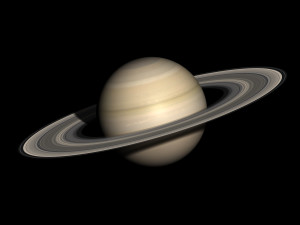 June 5 – New moon: This is the best time of the month to observe faint objects such as galaxies and star clusters because there is no moonlight to interfere.
June 5 – New moon: This is the best time of the month to observe faint objects such as galaxies and star clusters because there is no moonlight to interfere.- June 5 – Mercury at greatest western elongation: The planet Mercury reaches greatest western elongation of 24.2 degrees from the sun. This is the best time to view Mercury since it will be at its highest point above the horizon in the morning sky. Look for the planet low in the eastern sky just before sunrise.
- June 20 – Full moon: This full moon was known by early Native American tribes as the Full “Strawberry Moon,” according to seasky.org, because it signaled the time of year to gather ripening fruit. It also coincides with the peak of the strawberry harvesting season. This moon has also been known as the “Full Rose Moon” and the “Full Honey Moon.”
- June 20 – June solstice: The North Pole of the Earth will be tilted toward the sun, which will have reached its northernmost position in the sky and will be directly over the Tropic of Cancer at 23.44 degrees north latitude. This is the first day of summer, or summer solstice, in the Northern Hemisphere and the first day of winter, or winter solstice, in the Southern Hemisphere.
July
- July 4 – New moon: This is the best time of the month to observe faint objects such as galaxies and star clusters because there is no moonlight to interfere.
 July 4 – Juno at Jupiter: NASA’s Juno spacecraft is scheduled to arrive at Jupiter after a five year journey. Launched on Aug. 5, 2011, Juno will be inserted into a polar orbit around the giant planet on or around July 4. From this orbit the spacecraft will study Jupiter’s atmosphere and magnetic field. Juno will remain in orbit until October 2017, according to seasky.org, when the spacecraft will be de-orbited to crash into Jupiter.
July 4 – Juno at Jupiter: NASA’s Juno spacecraft is scheduled to arrive at Jupiter after a five year journey. Launched on Aug. 5, 2011, Juno will be inserted into a polar orbit around the giant planet on or around July 4. From this orbit the spacecraft will study Jupiter’s atmosphere and magnetic field. Juno will remain in orbit until October 2017, according to seasky.org, when the spacecraft will be de-orbited to crash into Jupiter.- July 19 – Full moon: This full moon was known by early Native American tribes as the “Full Buck Moon” because the male buck deer would begin to grow their new antlers at this time of year, according to seasky.org. This moon has also been known as the “Full Thunder Moon” and the “Full Hay Moon.”
- July 28-29 – Delta Aquarids meteor shower: The Delta Aquarids is an average shower, produced by debris left behind by comets Marsden and Kracht, and can produce up to 20 meteors per hour at its peak. The shower runs annually from July 12 to Aug. 23 and is expected to peak this year on the night of July 28 and morning of July 29. The second-quarter moon will block most of the fainter meteors this year. Best viewing will be from a dark location after midnight. Meteors will radiate from the constellation Aquarius, but can appear anywhere in the sky.
August
- Aug. 2 – New moon: This is the best time of the month to observe faint objects such as galaxies and star clusters because there is no moonlight to interfere.
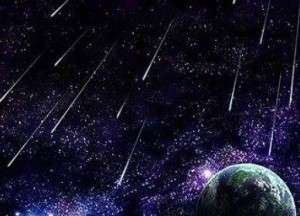 Aug. 12-13 – Perseids meteor shower: The Perseids is a favorite among many skywatchers and is one of the best meteor showers to observe as it produces up to 60 meteors per hour at its peak. The shower runs annually from July 17 to Aug. 24 and is expected to peak this year on the night of Aug. 12 and the morning of Aug. 13. The waxing moon will set shortly after midnight, leaving fairly dark skies for what should be an excellent early morning show. The Perseids is famous for producing a large number of bright meteors. It is produced by comet Swift-Tuttle, which was discovered in 1862. Meteors will radiate from the constellation Perseus, but can appear anywhere in the sky.
Aug. 12-13 – Perseids meteor shower: The Perseids is a favorite among many skywatchers and is one of the best meteor showers to observe as it produces up to 60 meteors per hour at its peak. The shower runs annually from July 17 to Aug. 24 and is expected to peak this year on the night of Aug. 12 and the morning of Aug. 13. The waxing moon will set shortly after midnight, leaving fairly dark skies for what should be an excellent early morning show. The Perseids is famous for producing a large number of bright meteors. It is produced by comet Swift-Tuttle, which was discovered in 1862. Meteors will radiate from the constellation Perseus, but can appear anywhere in the sky.- Aug. 16 – Mercury at greatest eastern elongation: The planet Mercury reaches greatest eastern elongation of 27.4 degrees from the sun. This is the best time to view Mercury since it will be at its highest point above the horizon in the evening sky. From Washington County, it will be a little difficult to observe as it will appear no higher than 8 degrees above the horizon, according to in-the-sky.org. It will become visible at around 8:39 p.m. MST as the dusk sky fades, 8 degrees above the western horizon. It will then sink towards the horizon, setting 1 hour and 3 minutes after the Sun at 9:24 p.m.
- Aug. 18 – Full moon: This full moon was known by early Native American tribes as the “Full Sturgeon Moon,” according to seasky.org, because the large sturgeon fish of the Great Lakes and other major lakes were more easily caught at this time of year. This moon has also been known as the “Green Corn Moon” and the “Grain Moon.”
- Aug. 27 – Conjunction of Venus and Jupiter: A spectacular conjunction of Venus and Jupiter will be visible in the evening sky. Even though it’s only a tenth the size, Venus will appear about 6 times brighter than Jupiter because Venus is enshrouded with highly reflective white clouds and is much closer to Earth. The two bright planets will be extremely close, appearing only 0.06 degrees apart. Look for this impressive pairing in the western sky just after sunset.
September
- Sept. 1 – New moon: This is the best time of the month to observe faint objects such as galaxies and star clusters because there is no moonlight to interfere.
- Sept. 1 – Annular solar eclipse: An annular solar eclipse occurs when the moon is too far away from the Earth to completely cover the sun, resulting in a ring of light around the darkened moon. Unfortunately, this eclipse will not be visible from the United States.
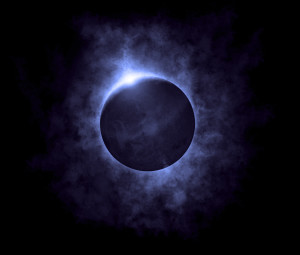 Sept. 16 – Full moon: The moon will be located on the opposite side of the Earth as the sun and its face will be will be fully illuminated. This full moon was known by early Native American tribes as the “Full Corn Moon,” according to seasky.org, because the corn is harvested around this time of year. This moon is also known as the “Harvest Moon.” The Harvest Moon is the full moon that occurs closest to the September equinox each year.
Sept. 16 – Full moon: The moon will be located on the opposite side of the Earth as the sun and its face will be will be fully illuminated. This full moon was known by early Native American tribes as the “Full Corn Moon,” according to seasky.org, because the corn is harvested around this time of year. This moon is also known as the “Harvest Moon.” The Harvest Moon is the full moon that occurs closest to the September equinox each year.- Sept. 16 – Penumbral lunar eclipse: In a penumbral eclipse the moon passes through an outer region of the Earth’s shadow called the penumbra. During this type of eclipse the moon will darken slightly but not completely. While it will not be visible from Washington since the moon will be beneath the horizon at the time, the eclipse will be visible throughout most of eastern Europe, eastern Africa, Asia and western Australia.
- Sept. 22 – September equinox: The September equinox is a day when the sun is above the horizon for exactly half the time everywhere on Earth. The sun will shine directly on the equator and there will be nearly equal amounts of day and night throughout the world. This day marks the beginning of autumn in the northern hemisphere and of spring in the southern hemisphere.
- Sept. 28 – Mercury at greatest western elongation: This is the best time to view Mercury since it will be at its highest point, shining above the horizon in the morning sky. From Washington County, it will be difficult to observe as it will appear no higher than 13 degrees above the horizon, according to in-the-sky.org. It will be visible in the dawn sky. It will rise at 5:59 a.m. MST, 1 hour and 28 minutes before the sun, and attain an altitude of 13 degrees above the eastern horizon before fading from view as dawn breaks at around 7:10 a.m.
October
- Oct. 1 – New moon: This is the best time of the month to observe faint objects such as galaxies and star clusters because there is no moonlight to interfere.
- Oct. 7 – Draconids meteor shower: The Draconids is a small meteor shower, producing only about 10 meteors per hour. It is produced by dust remnants of comet 21P Giacobini-Zinner, which was first discovered in 1900. The shower runs annually from Oct. 6-10 and is expected to peak this year on the night of Oct. 7. The first quarter moon will block the fainter meteors in the early evening. It will set shortly after midnight leaving darker skies for observing any lingering stragglers. Best viewing will be in the early evening from a dark location far away from city lights. Meteors will radiate from the constellation Draco, but can appear anywhere in the sky.
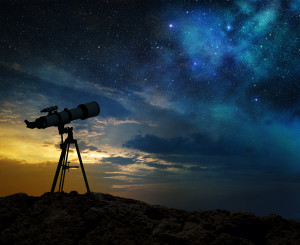 Oct. 15 – Uranus at opposition: This will be the best night of the year to view Uranus, as it makes its closest approach to Earth and its face will be fully illuminated by the Sun. Due to the distance of the blue-green planet, only those with large, high-powered telescopes may be able to see details of this planet. Those using smaller equipment will only be able to see it as a small teal dot. From Washington County, it will be visible between 8:39 p.m. and 5:57 a.m. It will become accessible at around 8:39 p.m., when it rises 20 degrees above the eastern horizon, and then reach its highest point in the sky at 1:20 a.m., 60 degrees above the southern horizon.
Oct. 15 – Uranus at opposition: This will be the best night of the year to view Uranus, as it makes its closest approach to Earth and its face will be fully illuminated by the Sun. Due to the distance of the blue-green planet, only those with large, high-powered telescopes may be able to see details of this planet. Those using smaller equipment will only be able to see it as a small teal dot. From Washington County, it will be visible between 8:39 p.m. and 5:57 a.m. It will become accessible at around 8:39 p.m., when it rises 20 degrees above the eastern horizon, and then reach its highest point in the sky at 1:20 a.m., 60 degrees above the southern horizon.- Oct. 16 – Full moon, Supermoon: The moon will be located on the opposite side of the Earth as the sun and its face will be will be fully illuminated. This full moon was known by early Native American tribes as the “Full Hunters Moon,” according to seasky.org, because at this time of year the leaves are falling and the game is fat and ready to hunt. This moon has also been known as the “Travel Moon” and the “Blood Moon.” This is also the first of three supermoons for 2016. The Moon will be at its closest approach to the Earth and may look slightly larger and brighter than usual.
- Oct. 21-22 – Orionids meteor shower: Like the Eta Aquarids, the Orionids is also made up of remnants from the famed Halley’s Comet. It is an average shower producing up to 20 meteors per hour at its peak. The shower runs annually from Oct. 2 to Nov. 7 and is expected to peak this year on the night of Oct. 21 and the morning of Oct. 22. The second quarter moon will block some of the fainter meteors this year, but the Orionids tend to be fairly bright so it could still be a good show. Meteors will radiate from the constellation Orion, but can appear anywhere in the sky.
- Oct. 30 – New moon: This is the best time to observe faint objects such as galaxies and star clusters because there is no moonlight to interfere.
November
- Nov. 4-5 – Taurids meteor shower: The Taurids is a long-running minor meteor shower producing only about 5-10 meteors per hour. The shower runs annually from Sept. 7 to Dec. 10. It will reach its maximum rate of activity this year on the night of Nov. 4. The Moon will be six days old at the time of peak activity, presenting minimal interference. This meteor shower is unusual because it consists of two separate streams, according to seasky.org. The first is produced by dust grains left behind by Asteroid 2004 TG10. The second stream is produced by debris left behind by Comet 2P Encke. Meteors will radiate from the constellation Taurus, but can appear anywhere in the sky.
 Nov. 14 – Full moon, supermoon: The moon will be located on the opposite side of the Earth as the sun and its face will be will be fully illuminated. This full moon was known by early Native American tribes as the “Full Beaver Moon” because this was the time of year to set the beaver traps before the swamps and rivers froze, according to seasky.org. It has also been known as the “Frosty Moon” and the “Hunter’s Moon.” This is also the second of three supermoons for 2016. The Moon will be at its closest approach to the Earth and may look slightly larger and brighter than usual.
Nov. 14 – Full moon, supermoon: The moon will be located on the opposite side of the Earth as the sun and its face will be will be fully illuminated. This full moon was known by early Native American tribes as the “Full Beaver Moon” because this was the time of year to set the beaver traps before the swamps and rivers froze, according to seasky.org. It has also been known as the “Frosty Moon” and the “Hunter’s Moon.” This is also the second of three supermoons for 2016. The Moon will be at its closest approach to the Earth and may look slightly larger and brighter than usual.- Nov. 17-18 – Leonids meteor shower: The Leonids is an average shower, producing up to 15 meteors per hour at its peak. The Leonids is produced by dust grains left behind by comet Tempel-Tuttle, which was discovered in 1865. The shower runs annually from Nov. 6-30. It peaks this year on the night of Nov. 17 and morning of Nov. 18. The waning moon will block many of the fainter meteors this year, but if you are patient you should be able to catch quite a few good ones. Meteors will radiate from the constellation Leo, but can appear anywhere in the sky. According to seasky.org, this shower is unique because it has a cyclonic peak about every 33 years where hundreds of meteors per hour can be seen. That last of these occurred in 2001.
- Nov. 29 – New moon: This is the best time of the month to observe faint objects such as galaxies and star clusters because there is no moonlight to interfere.
December
- Dec. 5 – Conjunction between the moon and Mars: The moon and Mars will make a close approach, passing within 2 degrees 52 feet of each other. From Washington County, the pair will become visible at around 5:31 p.m. MST as the dusk sky fades, 36 degrees above the southern horizon, according to in-the-sky.org. They will then sink towards the horizon, setting 5 hours and 1 minute after the Sun at 10:13 p.m.
- Dec. 6 – Conjunction between the moon and Neptune: The moon and Neptune will make a close approach, passing within 0 degrees 39 feet of each other. From Washington County, the pair will be visible in the evening sky. They will become visible at around 5:33 p.m. MST as the dusk sky fades, 42 degrees above the southern horizon, according to in-the-sky-org. They will then reach its highest point in the sky at 6:13 p.m., 43 degrees above the southern horizon. They will continue to be observable until around 11:04 p.m., when they sink to 8 degrees above the western horizon.
- Dec. 11 – Mercury at greatest eastern elongation: The planet Mercury reaches greatest eastern elongation of 20.8 degrees from the sun. This is the best time to view Mercury since it will be at its highest point above the horizon in the evening sky. Look for the planet low in the western sky just after sunset. From Washington County, it will be difficult to observe as it will appear no higher than 9 degrees above the horizon. It will become visible at around 5:32 p.m. MST as the dusk sky fades, 9 degrees above the south-western horizon. It will then sink towards the horizon, setting 1 hour and 23 minutes after the Sun at 6:35 p.m.
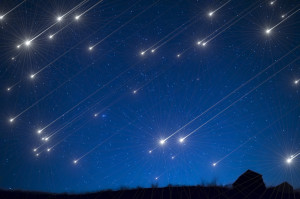 Dec. 13-14 – Geminids meteor shower: “The Geminids is the king of the meteor showers,” according to seasky.org. It is considered by many to be the best shower in the heavens, producing up to 120 multicolored meteors per hour at its peak. The shower runs annually from Dec. 7-17. It peaks this year on the night of Dec. 13 and morning of Dec 14. The nearly full moon will block out many of the fainter meteors this year, but the Geminids are so bright and numerous that it could still be a good show. The shower is produced by debris left behind by an asteroid known as 3200 Phaethon, which was discovered in 1982. Meteors will radiate from the constellation Gemini, but can appear anywhere in the sky.
Dec. 13-14 – Geminids meteor shower: “The Geminids is the king of the meteor showers,” according to seasky.org. It is considered by many to be the best shower in the heavens, producing up to 120 multicolored meteors per hour at its peak. The shower runs annually from Dec. 7-17. It peaks this year on the night of Dec. 13 and morning of Dec 14. The nearly full moon will block out many of the fainter meteors this year, but the Geminids are so bright and numerous that it could still be a good show. The shower is produced by debris left behind by an asteroid known as 3200 Phaethon, which was discovered in 1982. Meteors will radiate from the constellation Gemini, but can appear anywhere in the sky.- Dec. 14 – Full moon, Supermoon: The Moon will be located on the opposite side of the Earth as the Sun and its face will be will be fully illuminated. This full moon was known by early Native American tribes as the “Full Cold Moon,” according to seasky.org, because this is the time of year when the cold winter air settles in and the nights become long and dark. This moon has also been known as the “Full Long Nights Moon” and the “Moon Before Yule.” This is also the last of three supermoons for 2016. The moon will be at its closest approach to the Earth and may look slightly larger and brighter than usual.
- Dec. 21 – December solstice: During the December solstice, the South Pole of the earth will be tilted toward the sun, which will have reached its southernmost position in the sky and will be directly over the Tropic of Capricorn at 23.44 degrees south latitude. This is the first day of winter, or winter solstice, in the Northern Hemisphere and the first day of summer, or summer solstice, in the Southern Hemisphere.
- Dec. 21-22 – Ursids meteor shower: The Ursids is a minor meteor shower producing about 5-10 meteors per hour. The shower runs annually from Dec. 17-25. It peaks this year on the night of the Dec. 21 and morning of Dec. 22. The second quarter moon will block many of the fainter meteors. Best viewing will be just after midnight from a dark location far away from city lights. It is produced by dust grains left behind by comet Tuttle, which was first discovered in 1790, according to seasky.org. Meteors will radiate from the constellation Ursa Minor, but can appear anywhere in the sky.
- Dec. 29 – New moon: This is the best time of the month to observe faint objects such as galaxies and star clusters because there is no moonlight to interfere.
Hears to clear skies and a successful 2016 year in space!
Resources
Email: [email protected]
Twitter: @STGnews
Copyright St. George News, SaintGeorgeUtah.com LLC, 2016, all rights reserved.